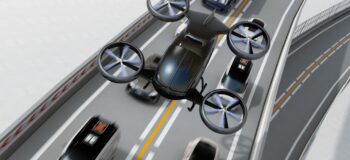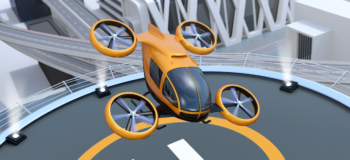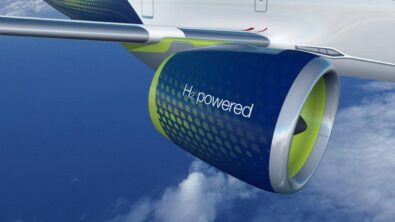Next-generation firefighting aircraft to be developed using Siemens Xcelerator portfolio
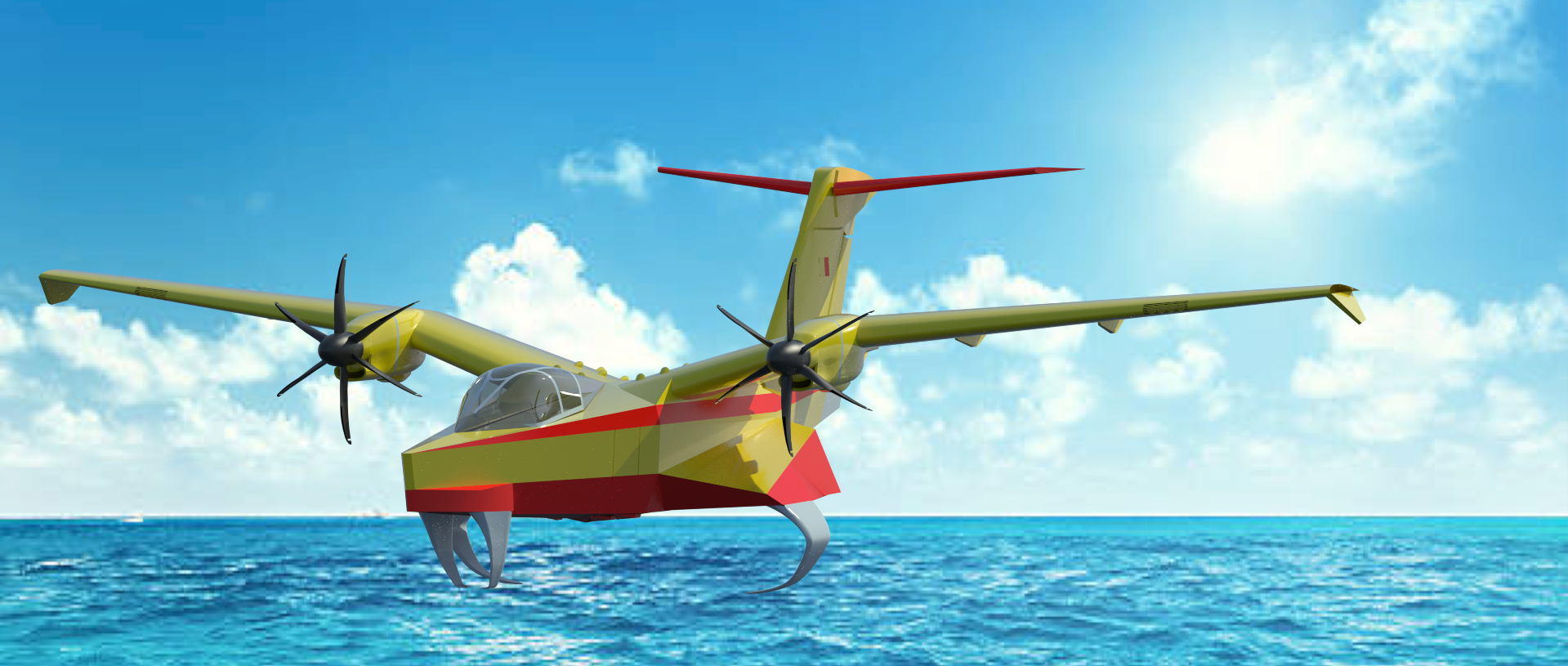
Roadfour’s Seagle, the next-generation purpose-built large-capacity amphibious firefighting aircraft, will be developed using Siemens’ digital transformation technologies.
When wildfires start, time and water are money. And when you’re using aircraft to fight them, doubly so. To become more effective against wildfires, the water capacity of the firefighting aircraft needs to increase and the turn-around time between consecutive drops of water needs to decrease. Current purpose-built fixed-wing firefighting aircraft can drop around 6,000 liters of water per round. Some helicopters can drop 4,000 liters per drop. Converted commercial tanker aircraft might carry more water; however, the turn-around time is not good enough as you require access to a runway for landing, re-watering and taking off.
The economic and ecological costs of wildfires due to the loss of property and natural habitats are huge. Another critical pressure from wildfires is the added air pollution. Across Europe, wildfires generated 6.4 megatons of carbon in 2022, a record high over the last 15 years for Europe and regions across the globe. The World Economic Forum reports from the same sources that, in 2021, wildfires emitted 1.76 billion tons of carbon (for reference, this is twice Germany’s annual CO2 production). This is why it’s critical to be able to put out wildfires as quickly as possible.
Wind, wildfires, waves
Amphibious aircraft have the largest potential to increase water delivery, but there is a problem. Wildfires typically occur when there is a lot of wind. When that happens, there are higher waves on lakes and the sea. This, in turn, creates limitations for amphibious aircraft to land and take-off from these bodies of water. Operating at the limits of wave amplitudes might damage the aircraft and hurt the crew, so increasing the operating margins here would be very helpful.
The Seagle, a next-generation large-capacity amphibious firefighting aircraft
This is where Roadfour’s plan for The Seagle aircraft program comes into play. It integrates some innovative ideas to increase water-bombing volumes, improve operating margins and decrease turnaround time.
The Seagle program is inspiring as it targets state-of-the-art technology to become the next-generation large-capacity amphibious firefighting aircraft. Initial requirements state it will carry and drop 12,000L of water per run, double what the most widely used aerial firefighter (the Canadair DHC-215/415/515) can achieve. It will refill its water tanks in 12s to initiate the next water-bombing run and can do so with higher amplitude waves.
The Seagle will be equipped with a fly-by-wire flight control system and a modern cockpit with a canopy that gives more visibility and modern avionics that will enable the integration of new water-drop targeting and navigation capabilities.
The firefighting aircraft will be designed to withstand the loads of very dynamic flight. Aerial firefighting is a very dynamic environment; the high positive and negative loads while maneuvering toward the fires requires an adapted aircraft structural architecture, performant aerodynamics and a lot of engine power. Finally, because the Seagle will also be able to operate from sea, the material choices and structural layout need to be considered for easy and cost-effective maintenance even in salty, corrosive conditions.
Roadfour and Siemens Digital Industries Software collaborate to develop the Seagle
We are very proud that Roadfour has chosen the Siemens Xcelerator platform to develop the firefighting aircraft.
“The implementation of a state-of-the-art digital enterprise will be key to the development of the Seagle,” states Mr. Savineau, Head of Aerostructure at Roadfour. “The use of Digital Twin technology to address many technical challenges of the program will be key to making the right choices, whether it is the systems architecture, the structural architecture and the aero-dynamic – and hydro-dynamic shape of the structures.”
“Roadfour will act as the integrator and type certificate owner, and as we speak, we are setting up agreements with European partners to deliver work packages. Roadfour will do the final assembly, verification and certification. Making sure all partners are aligned and well-informed throughout the program will be easy. The Siemens Digital Thread will support the team in maintaining all engineering data in the context of the engineering processes needed to develop and produce the aircraft in a certified environment.”, Mr. Du Four, CEO and founder of Roadfour.
The Siemens Xcelerator capabilities will be delivered to Roadfour as part of the Siemens Digital Industries Software start-up program provided to start-ups across many industries. At Siemens, we understand that these innovative programs require a Digital Backbone to support start-ups toward their success.
We also strongly believe that Siemens Xcelerator is the right choice for Roadfour. We realize that it is not only about ensuring that IT platforms support the creation of the needed Digital Twins and Digital Threads, assuring digital continuity with all partners. We also understand that the end goal of the project is not a digital file, it is a real firefighting aircraft.
Transitioning from the digital definition to a real aircraft is a major challenge for many aircraft programs. Indeed, the aircraft will have to touch reality as quickly as possible, Digital Twins of the production systems will help to develop the physical assembly capability, digitally connected with its Twin.
The aircraft will also have to undergo a lot of physical testing to achieve the required certification. A decent verification management platform will be needed to trace all requirements to the different elements for proof of compliance based on a combination of virtual and physical testing. Siemens stands for optimal processes based on a tight handshake between the virtual and physical tests needed to convince certification authorities that the aircraft is safe to operate under challenging missions.
Hence Siemens stays with its customers in the digital and the real worlds.
“When the going gets tough, the tough gets going.”
Roadfour
In 2016, the engineering company Roadfour patented technical elements for a towed drone to be used for aerial firefighting applications. Today, taking the position of an OEM, Roadfour has started the development phases of The Seagle, the next generation very large capacity amphibious aerial firefighting aircraft, designed for safe operations in the most demanding situations.
Siemens Digital Industries Software
Siemens Digital Industries Software helps organizations of all sizes digitally transform using software, hardware and services from the Siemens Xcelerator business platform. Siemens’ software and the comprehensive digital twin enable companies to optimize their design, engineering and manufacturing processes to turn today’s ideas into the sustainable products of the future. From chips to entire systems, from product to process, across all industries, Siemens Digital Industries Software is where today meets tomorrow.
You might also be interested in
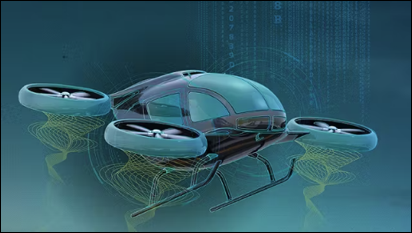
In this webinar, you will learn how a fly-it-before-you-build-it approach can help aerospace manufacturers and their suppliers deploy a comprehensive digital twin for aircraft performance engineering.
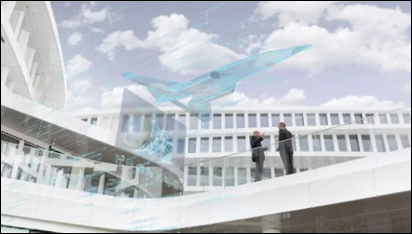
The white paper explains how a model-based systems engineering (MBSE) approach helps manufacturers and their suppliers innovate the future aircraft. Learn how to deploy a comprehensive digital twin for performance engineering, facilitate the behavioral verification and validation by using realistic simulations, and effectively tackle design complexities by removing silos between disciplines.
References
